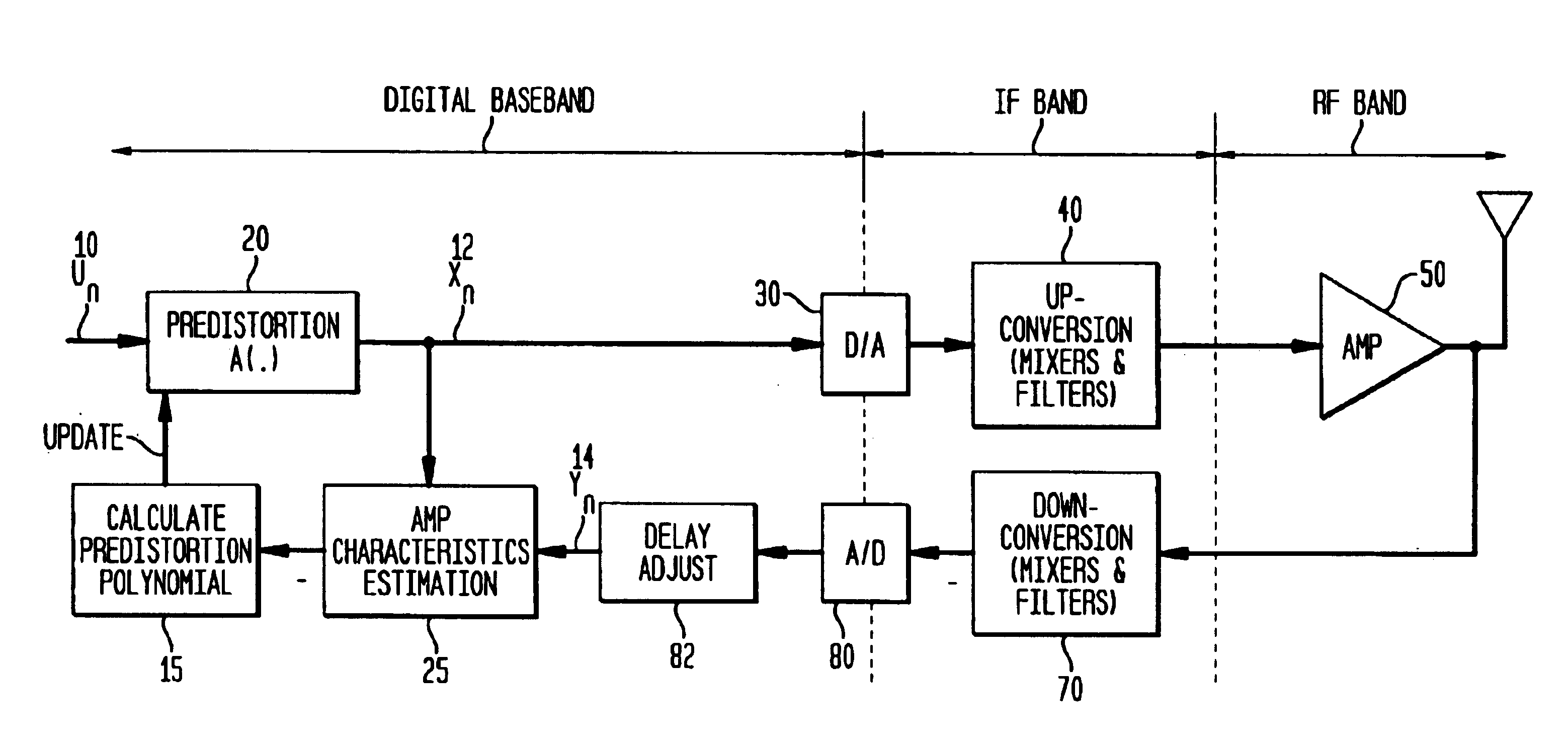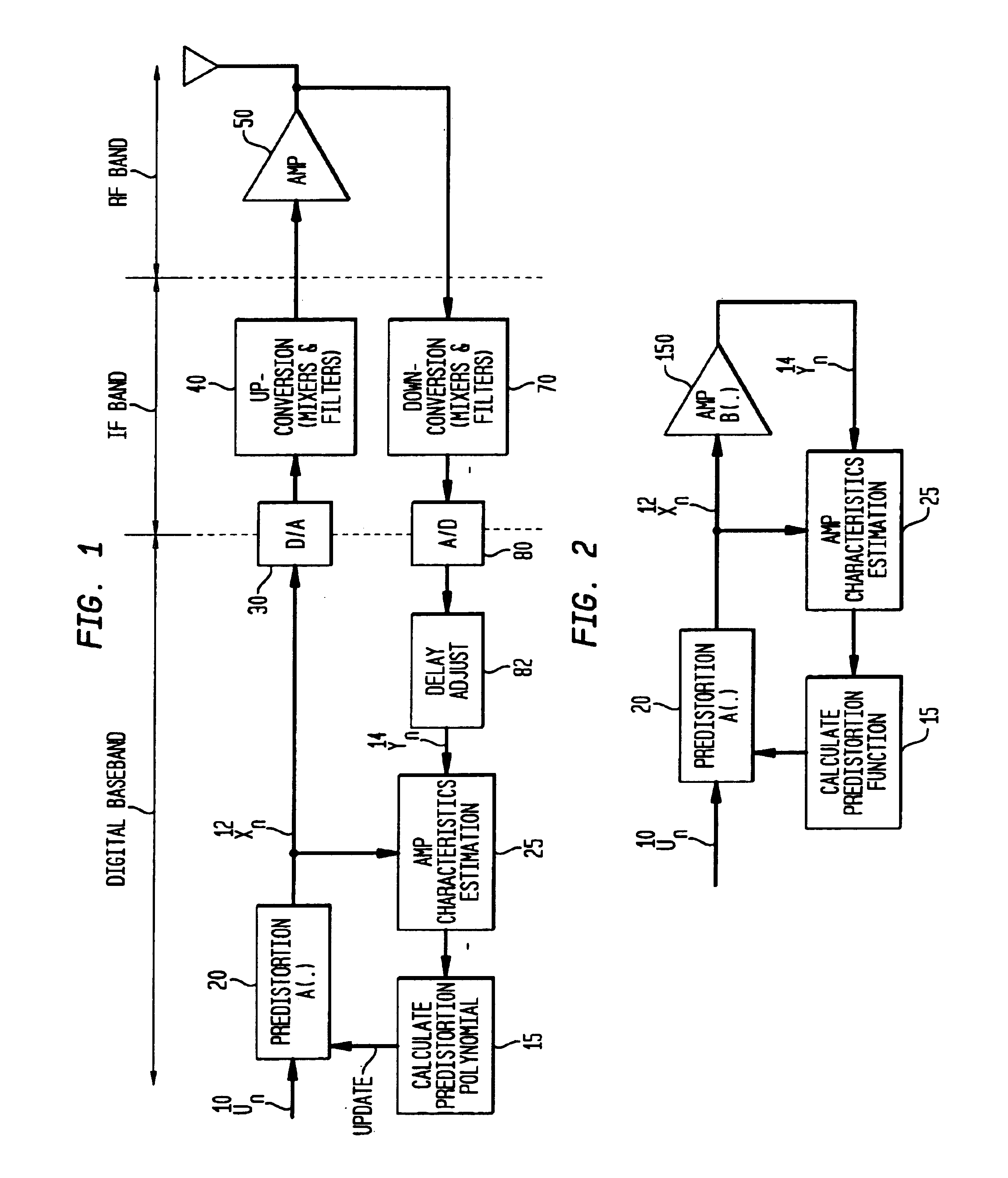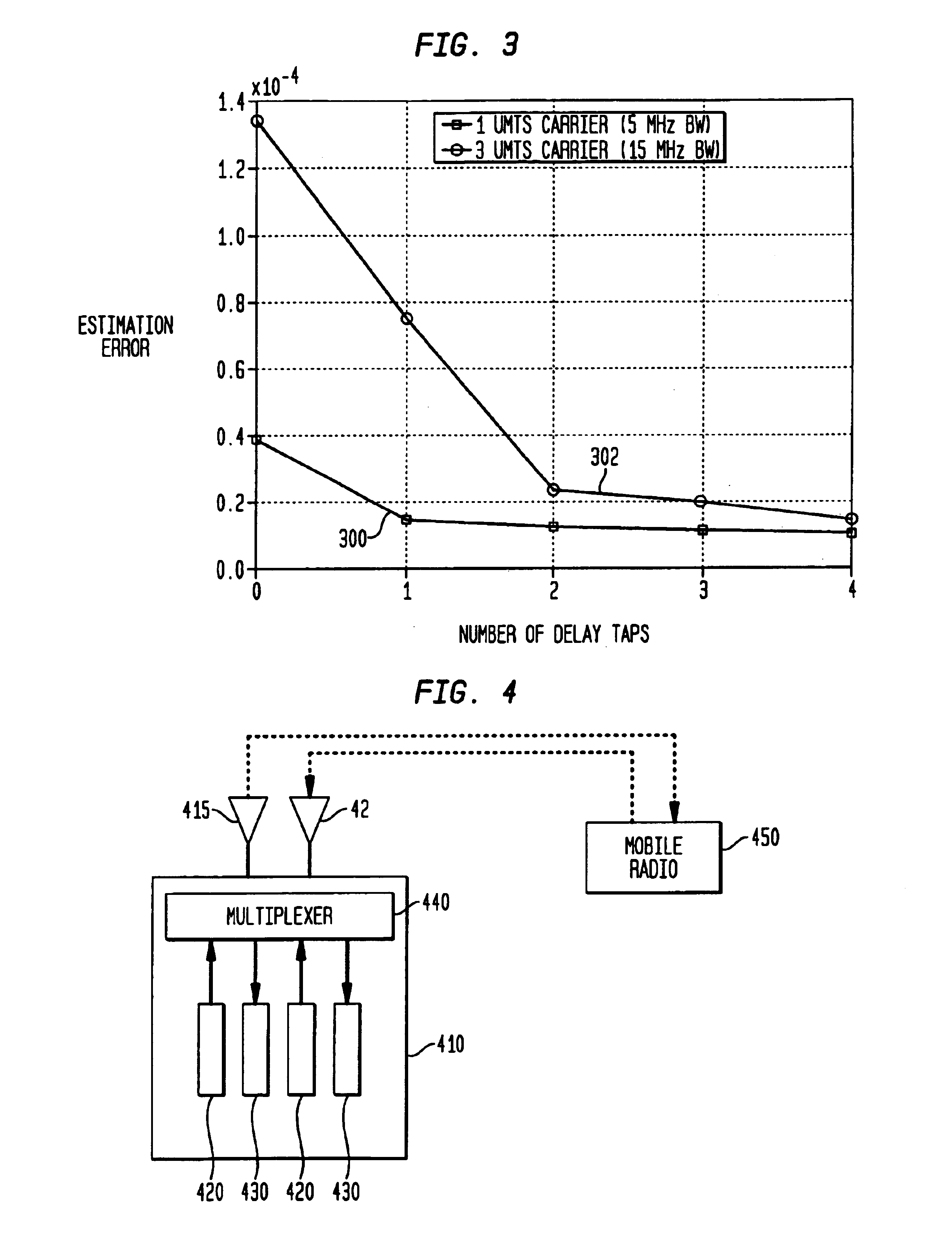Method and apparatus for modeling and estimating the characteristics of a power amplifier
a power amplifier and characteristic estimation technology, applied in the field of signal amplification, can solve the problems of significant signal distortion, undesirable multiplicative interaction, and power amplifiers present in transmission equipment operating in non-linear fashion, and achieves significant degradation in performance, improves the ability to operate at wide bandwidth, and fast and efficient implementation
- Summary
- Abstract
- Description
- Claims
- Application Information
AI Technical Summary
Benefits of technology
Problems solved by technology
Method used
Image
Examples
Embodiment Construction
[0022]The following description is presented to enable a person skilled in the art to make and use the invention, and is provided in the context of a particular application and its requirements. Various modifications to the disclosed embodiments will be readily apparent to those skilled in the art, and the general principles defined herein may be applied to other embodiments and applications without departing from the spirit and the scope of the invention. Thus, the present invention is not intended to be limited to the embodiments disclosed, but is to be accorded the widest scope consistent with the principles and features disclosed herein.
[0023]The specification initially discusses the general concept and principles of adaptive digital predistortion in view of the novel system for determining the characteristics of a power amplifier. Exemplary embodiments of the system for determining the characteristics of a power amplifier are then described.
Overview of Adaptive Power Amplifier ...
PUM
 Login to View More
Login to View More Abstract
Description
Claims
Application Information
 Login to View More
Login to View More - R&D
- Intellectual Property
- Life Sciences
- Materials
- Tech Scout
- Unparalleled Data Quality
- Higher Quality Content
- 60% Fewer Hallucinations
Browse by: Latest US Patents, China's latest patents, Technical Efficacy Thesaurus, Application Domain, Technology Topic, Popular Technical Reports.
© 2025 PatSnap. All rights reserved.Legal|Privacy policy|Modern Slavery Act Transparency Statement|Sitemap|About US| Contact US: help@patsnap.com



